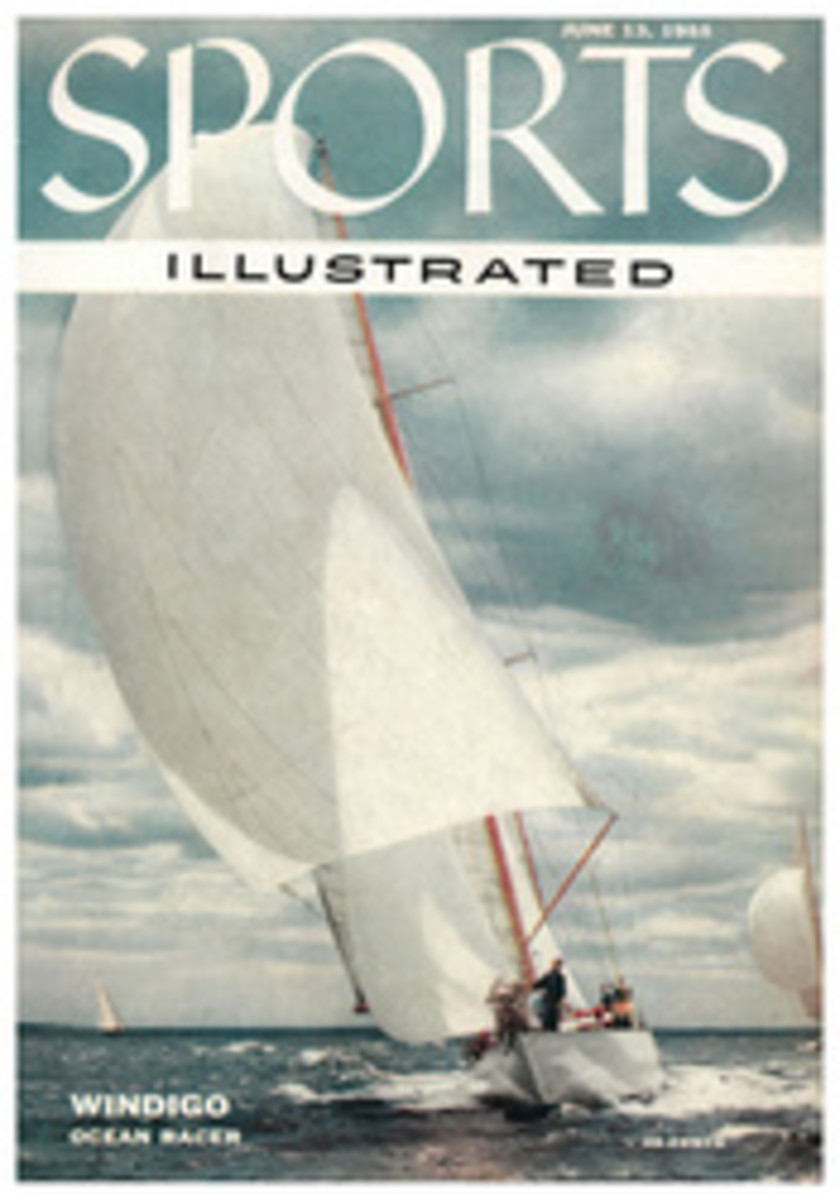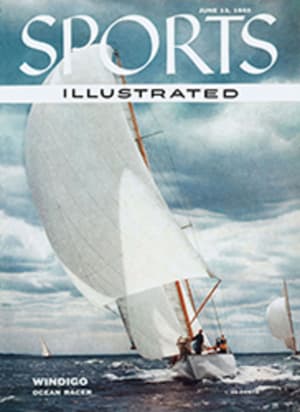
WHAT REALLY HAPPENED TO BILL VUKOVICH AT INDIANAPOLIS, AND WHY IT WILL HAPPEN AGAIN IF MEN CONTINUE TO DRIVE "ON ICE"
For the last decade intrepid, hungry men, lured by visions of glory and a pot of gold, have been driving the Indianapolis 500 "on ice"—that is, on the absolute, penultimate shred of traction, with nothing between them and eternity but a few cunningly contrived tire grooves. Admittedly, each year since the war, the cars have been improved a little: torsion bar suspension; a lowered center of gravity made possible in the new-type roadsters by inclining and offsetting the engine; still better tires—disc brakes, even. Sensibly viewed, these developments are good for slightly higher average speeds than were formerly possible. But no one has settled for this.
Instead, the fury of those "do-or-die" qualifying runs which entitle a driver to a place on the starting grid, and the dazzling incentive of pyramided cash awards, have boosted the average speed of the 500-mile classic beyond all reason. In 1946 it was 114.8 mph; last year nearly 131. This year, it killed Bill Vukovich.
The evening before the race I was sitting in Vukie's garage with Owner Lindsey Hopkins. He gave me a list of eight "hot dogs"—drivers with enough impassioned stamina to go flat out for as long as the race—or their cars-would last. They were, besides his own driver: Jimmy Bryan, Art Cross, Pat O'Connor, Bob Sweikert, Andy Linden, Jack McGrath and Al Herman. Bryan led at 200 miles, Cross at 350 miles before their cars quit; O'Connor was second at 475 miles when a fuel-line failure dropped him to eighth. Linden finished sixth; Herman seventh. Of the eight, however, the only driver who gave Vukovich a real run was McGrath, who was sidelined with ignition trouble three laps before the fatal pile-up.
The garbled versions of that accident were unfair to the men involved. No one was to blame. This is what really happened: Rodger Ward came out of the southeast turn sideways, "on ice," and flipped twice, miraculously landing back on his wheels. "Suddenly," he said, "the front end washed out on me." Following him were John Boyd and Al Keller, bombing down the straight with Keller a little ahead. They veered to avoid Ward, collided, and Boyd overturned. Vukovich, hard on Boyd's tail at 140 mph, tried to side-step the mess by swerving right. His car bumped Boyd's, struck the heavy wooden beams of the outside guard rail, straddled the rail, then went end over end, striking a passenger car, a truck and a jeep. Instantly the wreckage burst into flames, trapping the luckless Vukovich before anyone could get to him (diagram below). Ed Elisian stopped of his own accord to tender help. Vukovich was an old school friend of his.
Indianapolis originally was intended for speeds of 90 mph and its contour hasn't changed since 1909. Nor has the surface changed much either, since the original promoters thoughtfully paved its dirt surface with 3,200,000 bricks. McGrath, who qualified with an all-time lap record of 143.793 mph, sighed as he came in: "That's the most hair-raising ride I ever had. It really scared me." This year's "Go, man, go!" fever killed another seasoned driver, Manuel Ayulo, and produced a crop of spectacular spins and slides that wrecked two cars before they could sample "Operation Mile Hunt," the fraternity's polite name for the qualifying circus.
Before the start of the race Designer Art Sparks told me prophetically: "We've about reached the end of the line with this equipment." What he meant was that drivers are raising the ante each year mainly on one thing-suicidal nerve. Sparks designed the car with which the late George Robson won the 500 in 1946. His forged aluminum pistons were in every one of the 33 qualified cars this year. Said he: "They aren't going much faster on the straight than they were back in 1930. But now, instead of easing into the southwest turn at 105 mph, they're boring through at 130. That's where they make up time. On the turns." So far, 16 drivers have died on those treacherous 17° banked turns (which could be made steeper and thus slightly safer—a costly undertaking not likely soon), compared with two fatalities along the straightaway.
Sparks believes there is only one answer to the critical problem of traction at the brickyard—the four-wheel-drive car. He has the blueprints for such a car and it actually was entered by Joel Thorne for this year's race, but couldn't be built in time. "Four-wheel drive," Sparks concluded, "is a sure way of getting the wheels to absorb more power without breaking traction. That means not only faster acceleration but better adhesion on turns. This new job could lap the course at a safe 10 mph faster than anything today."
ONLY HALF RIGHT
Lou Moore's front-drive Blue Crowns (last seen in 1952) and Lew Welch's Novis (one of which failed to qualify last month because of a broken pinion gear) went a step in this direction by pulling the cars around the turns instead of pushing them. The Blue Crowns won the 500 three years in a row; the supercharged Novis almost won it twice, but killed Ralph Hepburn and Chet Miller and burned Duke Nalon nearly to death. The Novis had far more power than the front wheels could possibly absorb. Let the driver tromp on it a shade too hard and the front end lifted. When that happened, the front wheels broke traction and with the sudden slowing the rear tried to catch up with the nose. This temperamental quirk soured name chauffeurs on front drive, but they were only half right, just as the car was only half right.
Without in any way detracting from the skillful, brave and deserving performance of winner Bob Sweikert in the John Zink Special, this year's 500 somehow managed to be both frightening and depressing. Indianapolis has plenty of new talent. What it needs is new and safer cars. It needs them in the worst way.
MAP
VOKOVICH
BOYD
WARD 27
KELLER 42
ELISIAN 68
Stands
Stands
Footbridge
DISPOSITION OF CARS AFTER FATAL VUKOVICH ACCIDENT
Chain Reaction began when Ward spun coming out of southeast turn (right) and began to roll. Keller and Boyd collided just short of footbridge (explosion star) when Keller swerved left to avoid Ward. Vukovich, leading Keller by two laps, was thus confronted by three crazily-gyrating cars as he roared up from turn. He tried to get through on outside and apparently passed Ward before latter's car, back on its wheels, backed into rail; but he could not avoid hitting the still-spinning Boyd. Boyd's car plunged down the track and landed upside down; Vukovich's climbed the rail, skittered along it, then somersaulted off and burned, trapping the driver beneath it. Elisian, not involved in the accident, spun deliberately to halt his car in the infield.

